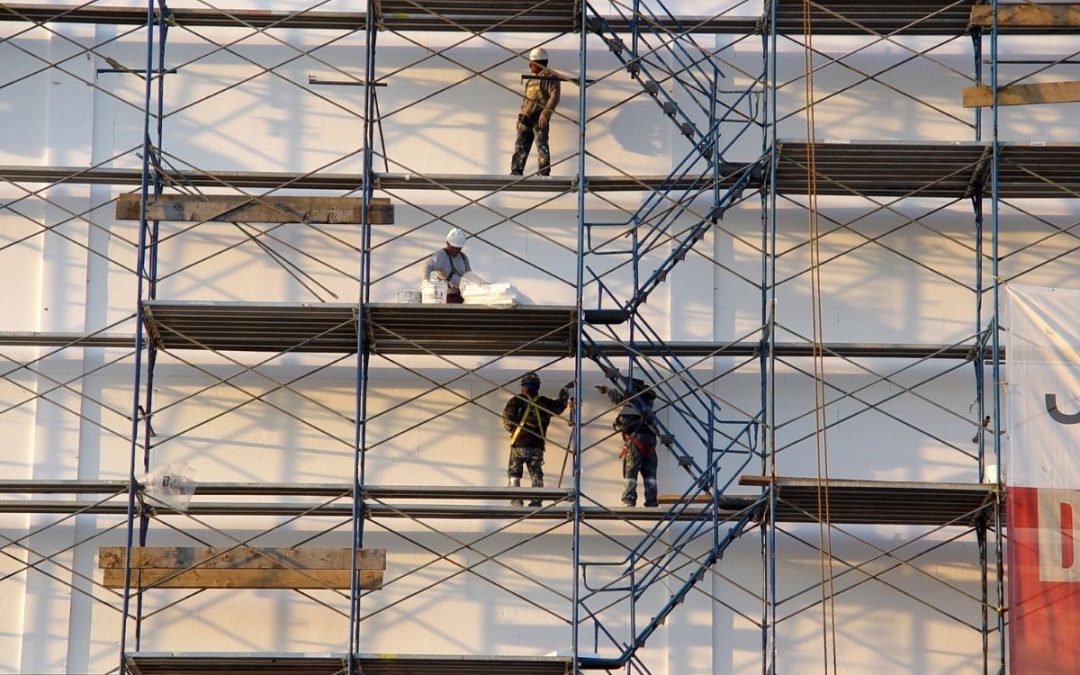Published April 5, 2021
If you’ve ever worked in construction, then you’ll know how important scaffolding is when building something. In fact, most construction projects will require a scaffolding system of some sort.
But due to the complex needs of individual projects, scaffolding systems can vary widely. Some may need a simple DIY scaffold while others require more elaborate ones. Using the right type of scaffolding system will not only guarantee safety for your workers but also a smooth-sailing building project.
So how do you know which scaffolding system to use?
First, you need to remember the basic function of a scaffold: to provide a temporary platform to elevate and support workers and materials. As such, they need to be strong enough to hold not just the workers and their tools but also building materials like bricks and concrete.
You also need to consider the overall structure and the type of work that will be done. Some structural surfaces may need a specialized type of scaffolding system. While multi-level skyscrapers are simply too high for some types of scaffolds.
To help you out, we compiled these different types of scaffolding systems and when to use them. Please note that this is not an exhaustive list as there are a lot of different types of scaffolds used around the world.
1. Modular/System Scaffolding
Also known as a pre-fabricated scaffold, a system scaffolding is the plug-and-play version of scaffolds. OSHA describes it as consisting of posts with fixed connection points. These points accept runners, bearers, and diagonals that can be connected at predetermined levels.
Because it’s pre-engineered, it can easily be installed and dismantled. It can also be installed on either side of the building offering great flexibility. This is why system scaffoldings are most suitable for structures with complex facades.
There are many different kinds of modular scaffolding. The most common ones are:
- Ringlock scaffolding
- Kwikstage scaffolding
- Cuplock scaffolding
- Frame scaffolding
- Haki scaffolding
- Shoring props
2. Single Scaffolding
Primarily used in masonry, the single scaffolding system uses the structure being built as support. It consists of ledgers and standards that are placed parallel to a wall. Putlogs are then inserted in holes on the wall to support the scaffold. Because it uses putlogs, it’s also sometimes referred to as putlog scaffolding. Scaffoldings like this are effective for simple brick buildings but will not work for complex structures.
3. Mast Climbing Scaffolding
As the name suggests, this is a type of scaffolding with platforms that climb a vertical mast or tower. It typically consists of three parts:
- a pair of vertical towers usually composed of modular stacked units resting on stationary beams
- a work platform that can travel up and down the tower
- a drive unit that moves the platform up and down
This type of scaffolding is popular with masonry contractors as it saves time and is safer than most other types. They’re also capable of carrying heavier loads and can reach heights better than traditional scaffolds.
Since they don’t require a large space at the base, they’re ideal for projects with limited ground area.

4. Wooden Scaffolding
Wood scaffolds have been used since ancient times. In modern construction, wooded scaffoldings are still very much in use. Albeit with much more emphasis on safety.
There are many types of woods that are used as scaffolds. But the most common ones are pre-cut lumber. In some parts of Asia, bamboo is also commonly used because of its sustainability, flexibility, and strength.
Wooden scaffoldings are recommended for building projects that don’t require transporting very heavy loads.
5. Suspended Scaffolding
OSHA describes suspended scaffolds as platforms suspended by ropes or other non-rigid means, from an overhead structure. Unlike the previous four, this type of scaffold isn’t fixed. This is why it’s also known as a “swinging scaffolding”.
There are 8 common types of suspended scaffold:
- Catenary
- Multi-level
- Interior hung
- Needle beam
- Float
- Multi-point adjustable
- Single-point adjustable
- Swing stage
This type of scaffolding system is commonly used in projects where tall structures are involved. Or when constructing a supported scaffolding is impossible or impractical.
6. Tubular Scaffolding
As the name suggests, tubular scaffolding uses steel tubes that are connected by clamps. These tubes can be connected at any angle and at any interval as long as it follows safety rules and regulations.
Though this type of scaffold is labor and time-intensive, it has excellent load-bearing properties. It also offers unlimited versatility making it a popular option in refineries and power plants.
7. Aerial Lifts
An aerial lift is basically a platform suspended on a crane or some type of wheeled conveyance. Because they’re mobile, they are very versatile and easy to set-up.
Depending on your project needs, there are 6 common types of aerial lifts you can choose from:
- Personnel lifts
- Electric boom lifts
- Scissor lifts
- Towable boom lifts
- Atrium lifts
- Straight telescopic booms
In construction projects, aerial lifts are typically used in hard-to-reach areas particularly when painting a building’s exterior.
Interested In Cutting Technologies?
For nearly 40 years Cutting Technologies (CTI) has been the go-to demolition contractor for technically demanding, one-off jobs. Our wealth of experience enables CTI to bring “outside-of-the-block” approaches to achieve the impossible. Contractors trust CTI to get the job done right. Take a look at our demolition services on our website.

About The Author
As an avid traveler, Judy Ponio loves to write blogs about traveling and how to save money when making international calls.

